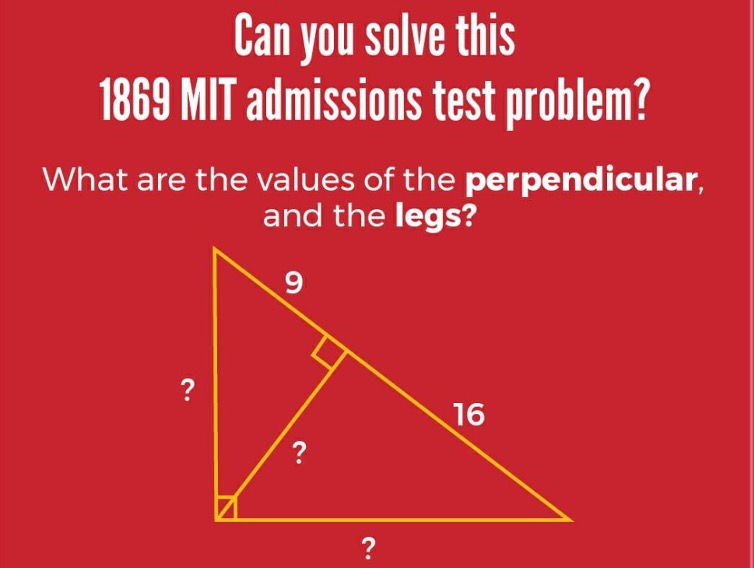
1869 MIT Admissions Test Problem
|
First let’s label a few things, lengths of three segments with question marks above, three angles in the big triangle, and the point along the hypotenuse of the big triangle where the interior line meets it at a right angle: 
We have three right triangles, one big one, XYZ, and two small ones, XWZ and XYW. We label the segments with question marks a, b, and d. We are going to use the Pythagorean theorem three times! It says, in a right triangle with legs a and b and hypotenuse c, a2 + b2 = c2.
So we substitute 92 + d2 for a2 in (1): Next we substitute 162 + d2 for b2 in (4): So 2 d2 = 252 – 162 – 92 = 625 – 256 – 81 = 288 d2 = 144 d = 12 From (2), a2 = 92 + d2 = 81 + 144 = 225 a = 15 From (1), a2 + b2 = 252, so b2 = 252 - 152 = 625 – 225 = 400 b = 20 So a = 15, b = 20, and d = 12 So the perpendicular in the figure has length 12 units, and the two legs have lengths 15 and 20 units. We did it! |